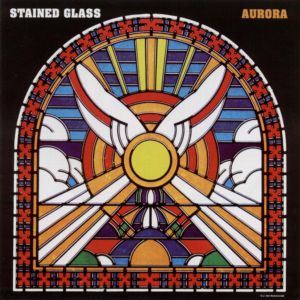
- Format: MP3

Size: 65.8 MB
Bitrade: 256
mp3
Ripped By: ChrisGoes(Rock)
Printable Artwork Included
More of a folk-rock band than a psychedelic band Stained Glass started out in 1966 playing Beatles cover versions in San Jose. Originally recording for RCA they issued a series of singles. The first two, which were a mixture of folk and Merseybeat, met with some local success. The best was We Got A Long Way To Go, a driving rock song with immediate appeal, which was a big hit in San Jose during April 1967.
They moved to Capitol in the Spring of 1968, issuing three singles and two albums. Of the six 45 sides on Capitol only Lady In Lace is non-LP. Both albums were quite highly-rated, but failed to make much impact and the band disbanded in November 1969, although McPherson went on the play with Copperhead.
Second, and regarded by some as the better of the band's 2 albums that they recorded for Capitol in the late '60s. Formed in 1966, stained glass began life as a Beatles cover band and then mutated into a pop psych rock outfit with Quicksilver Messenger Service leanings. They performed in and around their native San Jose until an A & R man from RCA signed them to the label later that year. Vocalist/bass player Jim McPherson would go on to form Copperhead with John Cippolina after this final Stained Glass Release which had a looser, more jamming feel than the previous album. Highly recommended to any US psych fan.
01 - Gettin´ On´s Gettin´ Rough - 3.00
02 - Jim Dandy - 3.15
03 - A Common Thief - 5.21
04 - The Kibitzer - 5.02
05 - Inca Treasure - 3.37
06 - Daddy´s Claim - 3.40
07 - Sweetest Thing - 3.27
08 - Mad Lynn Ball - 3.44
09 - The Necromancer - 3.46
http://g-images.amazon.com/images/G/01/ciu/47/f2/e4afb2c008a0593000ea4010.L.jpg
http://g-images.amazon.com/images/G/01/ciu/78/59/70ddb2c008a0393000ea4010.L.jpg
US Psychedelic Folk-Rock 1969
More of a folk-rock band than a psychedelic band Stained Glass started out in 1966 playing Beatles cover versions in San Jose. Originally recording for RCA they issued a series of singles. The first two, which were a mixture of folk and Merseybeat, met with some local success. The best was We Got A Long Way To Go, a driving rock song with immediate appeal, which was a big hit in San Jose during April 1967.
They moved to Capitol in the Spring of 1968, issuing three singles and two albums. Of the six 45 sides on Capitol only Lady In Lace is non-LP. Both albums were quite highly-rated, but failed to make much impact and the band disbanded in November 1969, although McPherson went on the play with Copperhead.
Second, and regarded by some as the better of the band's 2 albums that they recorded for Capitol in the late '60s. Formed in 1966, stained glass began life as a Beatles cover band and then mutated into a pop psych rock outfit with Quicksilver Messenger Service leanings. They performed in and around their native San Jose until an A & R man from RCA signed them to the label later that year. Vocalist/bass player Jim McPherson would go on to form Copperhead with John Cippolina after this final Stained Glass Release which had a looser, more jamming feel than the previous album. Highly recommended to any US psych fan.
Folk-rock trio Stained Glass formed in 1966, a product of the same San Jose, CA, music scene that also produced the legendary Count Five and the E-Types. Singer/bassist Jim McPherson, guitarist Bob Rominger, and drummer Dennis Carrasco quickly evolved from Beatles covers to writing original material, even though upon signing to RCA, their debut single was headlined by the Fab Four cover "If I Needed Someone." The self-penned gem "My Buddy Sin" closed out the year, and in the spring of 1967 the Stained Glass scored a major local hit with "We Got a Long Way to Go." "A Scene in Between" soon followed, but the group again proved unable to dent the national charts, and RCA terminated their contract. Rominger soon exited, and with the addition of new guitarist Tom Bryant, the Stained Glass signed to Capitol, issuing "Lady in Lace" in mid-1968. Early the following year, they issued their first full-length effort, Crazy Horse Roads; Aurora soon followed, but when both albums were ignored by record buyers, the trio dissolved in November 1969. McPherson later resurfaced in Copperhead.